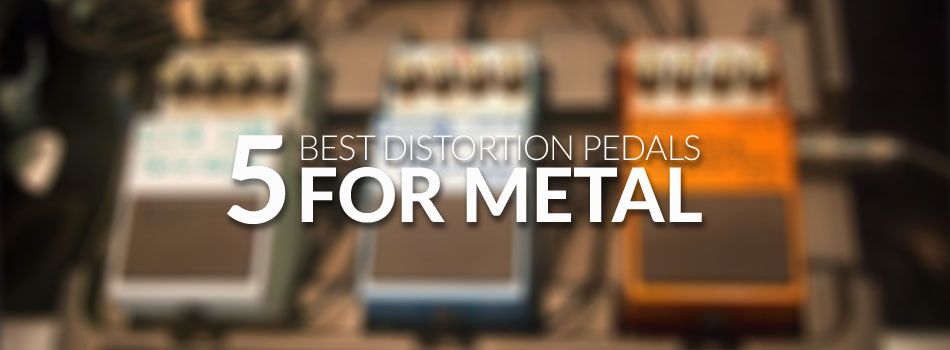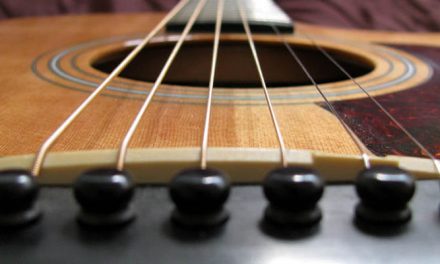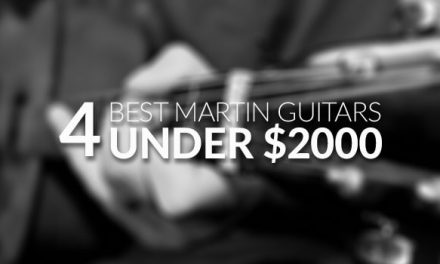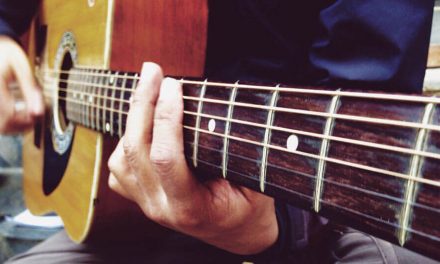Introduction: a foreword about the Best Distortion Pedals for Metal
A statement that metalheads are nerdy about their gear is absolutely true – metal guitarists more than most. The search for “your” unique sound is a long and tough road, and it’s paved with metal pedals and effect pedals. So we are here to show you and review our list for the best distortion pedals for metal in the market today.
A metal pedal is a small contraption that houses tiny electronic bits that alter the guitar’s sound.
Now, a good metal pedal is the one that will get you where you want to be – be it a budget pedal from an obscure brand, or a high-end model made by the big guys in the branch.
We’re here to discuss both extremes, and everything in between.

QUICK RUNDOWN
If you are in a hurry these are our TOP 3 Picks for The Best Distortion Pedals for Metal:
Last Updated on
Table of Contents
What To Look For In A Metal Pedal
The mathematics behind a metal pedal don’t require a scientist to cope and understand. Generally, most units are made in a straightforward fashion, and you’ll usually have as much as several knobs to worry about.
Anyhow, let’s see what you should look for on your search for the best metal pedal.
Gain Boost
The “gain” governs the cruchiness of your sound. All metal pedals are outfitted with a variation of the “Gain” equalizer, and all of them function in the same way. The closer the equalizer is to the left, the smaller the gain output, and vice versa. A high gain boost will improve the distortion of your sound, or muddle up the crunchy tones of your cleans.Overdrive
In short, the “overdrive” is usually either an option on the pedal, or a standalone pedal with other equalizer knobs. In the first case, the overdrive simulates the drive effect on the amplifiers. A standalone overdrive pedal is usually outfitted with a input volume knob, and the output volume knob, and it’s commonly used with other distortion pedals in the rig.Bass and/or Low
Some pedals have the “bass” knob while others have “lows”, and they usually mean the same thing. In short, you need the lows for palm-muted notes, heavy riffs, and drone-like sounds, and it’s virtually impossible to achieve a good sound on a guitar without these knobs.Additional Effects
A good metal pedal should have at least one unique effect. For example, the Metal Shaman pedal comes with “brutality” and “disintegrate” effects that substantially increase the distortion.BEST DISTORTION PEDALS FOR METAL

Best Metal Pedal Under $400:
A quick overview:
Let’s open up our review of the best metal pedals with Blackstar’s titan – the HT-Metal. Generally, this is a pedal you want if you’re looking for massive gains to saturate your tone.
The big guys at Blackstar have devised a way to make extreme metal guitarists sound even more brutal with this outstanding pedal, as you’ll come to see should you come into the possession of it.
Hell, if Ihsahn uses it, you know it’s something else. If we were to describe the overall performance of Blackstar’s HT-Metal, it would be gain, gain, and more gain, all over the place.
Manufacturer specs and features:
Essentially, this is a two-channel distortion pedal with three modes. The first channel governs the “cleans” and the overdrive, in case you want to take a soft approach (if such thing is even possible with HT-Metal).
The overdrive can’t even begin to compare to the full-jacket metal distortion mode, but it’s crunchy enough to knock up a couple of hard rock riffs.
Among the adjustable settings you’ll find the gain, level, bass, middle, and treble functions, and the two channels we’ve already mentioned.
See it in Action
- Sound 99%
- Performance 98%
- Price 90%
THINGS WE LIKED
- Perfect for any kind of metal, there’s no doubt about that. The Blackstar HT-Metal offers superior gain boost, and it’s capable of transforming the tone of your guitar into a wailing wraith in seconds
- There are three modes for you to switch between, depending on the mood – the Clean, Overdrive, and Distortion
- Even though this model was built specifically for metal (as the name implies), it’s actually quite versatile. You can easily switch between American or British tones, depending on the channel and parameters
THINGS WE DIDN'T LIKE
- There are no major flaws concerning Blackstar’s HT-Metal. Sure, it costs quite a lot, but true metal guitarists are well aware of the fact that perfect gear costs, and this pedal is definitely a weapon you want to have in your arsena
Best Metal Pedal Under $300:
A quick overview:
Unlike most distortion pedals, Wampler’s Triple Wreck isn’t just an effect pedal. It’s more like a pre-amp, as it doesn’t bear much semblance to other metal pedals.
In truth, it offers a distinctive, heavy, grinding sound that metal musicians aspire, and it comes outfitted with various adjustable settings, making it somewhat difficult to master, but amazing by a long-shot.
The distortion and gains are off the charts, and there’s plenty of versatility to go around. Needless to say, black, death, and other extreme metal fans will greatly benefit from Triple Wreck, as it offers an opportunity to customize your sound to the depths of pure uniqueness.
Manufacturer specs and features:
The main pot governs two distinct settings – the “Hard” setting, and the “Brutal” setting. Even though both of these terms are quite self-explanatory, you’d be surprised at what happens when the switch is flipped.
The “Hard” setting boosts the bass output, allowing for the old-school approach. It’s actually pretty good for classic metalheads and rockers. As for the “brutal”, the maelstrom of harmonics is unleashed once you’ve pressed the button.
As it’s common with high-end metal pedals, the Triple Wreck offers a substantial amount of gain.
Lastly, the “boost” button at the bottom-right corner thickens the sound to the point of breaking.
Personally, we suggest that you experiment with the manifold of options the Triple Wreck offers if you wish to discover the plethora of advantages it offers.
See it in Action
- Sound 93%
- Performance 96%
- Price 92%
THINGS WE LIKED
- Just like Blackstar’s HT-Metal, the Triple Wreck offers plenty of gain and distortion. Use the “boost” to pump up and saturate your tone to your liking
- This metal pedal offers plenty of versatility due to the vast amount of adjustable settings, making it ideal for the majority of metal sub-genres
THINGS WE DIDN'T LIKE
- Most people find it difficult to memorize where the input is and where the output should be. Namely, they aren’t marked and printed properly
- Just like the HT-Metal, this one is quite expensive, although it’s well worth the money
Best Metal Pedal Under $250:
A quick overview:
The first thing you’ll notice about Paul Rivera’s Metal Shaman is the exquisite appearance. Even though most musicians don’t mind the construction as long as it isn’t flimsy or pink, having a unique pedal like this should mean something.
Anyhow, the looks are not that important, that’s true, so let’s see what the Shaman’s witchcraft offers. First of all, this is a high-distortion pedal with an amazing response. In fact, the moment you plug your guitar in it you’ll get a huge flow of massive overdrive.
The sound and performance of Metal Shaman can be characterized as distinctive, unique, and versatile. You can easily crank up the equalizers at half spears if you want a crunchy hard-rock tone, drop them by half and you’ll be swimming in classic rock waters. But, should you go beyond, you’ll be deep in the waters of brutality.
Manufacturer specs and features:
The EQs are the thing about Metal Shaman, as they’re the ones “responsible” for such versatility. The core equalizers are at the very top of the pedal, including the bass, mid, high, and gain.
Just next to the “gain” EQ lies the “brutality” switch. It’s an ill omen indeed, as you’ll burst out every black incantation from the four dark corners of the earth once it’s flipped.
Contrary to everything we’ve thought we know about metal pedals, the clarity of Metal Shaman’s performance is something that was totally unexpected.
No matter how much you dabble with the EQs, you’ll still have total control of the higher frequencies. Ideally, this metal pedal is for Pantera and Metallica lovers, as you’ll easily match Dime’s sound with the Metal Shaman.
See it in Action
- Sound 96%
- Performance 90%
- Price 94%
THINGS WE LIKED
- Paul Rivera’s Metal Shaman is one of the most affordable high-end metal pedals
- The amount of control and sound clarity Metal Shaman offers is unprecedented and unparalleled
- The only way to “lose control” and bring some hell on the stage is to go on with the “brutality” switch. You’ll get a huge bass boost and probably rupture a couple of ear-drums in your audience. Press the “disintegrate” at your own peril, as you may find yourself facing a lawsuit for attempted murder
THINGS WE DIDN'T LIKE
- Some options that Metal Shaman offers go way beyond the sphere of extreme metal. For example, some laymen guitarists could mix up the Disintegrate, Brutal, and Noise Gate functions, ending up with a massive amount of fuzz in their ton
Best Metal Pedal Under $200:
A quick overview:
Digitech’s DROP pitch-shifter pedal may just be the simplest pedal for metal ever. Actually, it’s a pedal that allows you to change the tuning of your guitar in an instant, from a semi-tone, to a full octave.
If you’ve been wondering what you could do with a drop-tune, or even a tune-in, here’s something to calm your mind.
Generally, all this pedal does is change the pitch of your sound. It’s not a standard pitch-shifter (most beginner metal musicians tend to think of Chuck Schuldiner’s pedal), but it does, paradoxically, shift the pitch by a semi-tone (or by seven increments max).
Manufacturer specs and features:
There are only two equalizers onboard – the “True Bypass” in case you don’t need to use it in your rig, and the Pitch Shift control knob.
Now, the control knob is “passive” until you turn it clockwise, meaning that your guitar will remain in the same tuning even when this pedal is active.
Turning the knob results in pitch shifting, as you’ll go “down” each time the knob is turned. The last feature of Digitech’s Drop Pedal is the on/off pot which is more than self-explanatory.
See it in Action
- Sound 83%
- Performance 89%
- Price 92%
THINGS WE LIKED
- This pedal offers an innovative way to experiment with your music
- Ideal for progressive sub-genres of metal
- Digitech’s Drop Tune allows you to switch between tunings in seconds
- Changes your overall tone, saturating it by a little
THINGS WE DIDN'T LIKE
- Not much versatility overall – serves a singular purpose
- Minor latency issues
Best Metal Pedal Under $100:
A quick overview:
The last metal pedal in our review is Stagg’s BX-Metal from the BLAXX series. It’s a small, but powerful metal pedal that comes outfitted with a great set of features.
Now, even though it comes cheap, Stagg’s BX-Metal pedal is more than capable of raising hell, that much is certain. One of the best things about this pedal is that it’s extremely plain and straightforward.
Namely, there are only three control buttons and one pot, so even the immediate beginners won’t have any trouble handling it. Overall, it’s well worth the money.
Manufacturer specs and features:
There are three modes of distortion on Stagg’s metal pedal, including the Boost Cut (this one is your original tone), the Lo boost, and the Hi boost.
The pedal is practically weightless, weighing only 240 grams, and it was designed with compactness in mind. Additionally, there are three rotor controls, including the Gain control, Level control, and the Tone control.
These controls allow for supreme versatility, so you can use this pedal for a plethora of metal sub-genres.
See it in Action
- Sound 80%
- Performance 85%
- Price 93%
THINGS WE LIKED
- This pedal offers an innovative way to experiment with your music
- Ideal for progressive sub-genres of metal
- Digitech’s Drop Tune allows you to switch between tunings in seconds
- Changes your overall tone, saturating it by a little
THINGS WE DIDN'T LIKE
- Not much versatility overall – serves a singular purpose
- Minor latency issues
BUYING GUIDE & THINGS TO CONSIDER:
What makes a good distortion pedal for metal
Actually, this is a matter of subjective preference. Most metalheads argue about what’s “brutal” and what’s not, so it’s only fitting that the very term of “distortion” is quite poorly defined. To a layman, the distortion pedal is nothing more than a tool that is supposed to mud up the sound. A true metal musician, however, has tried, heard, or owned several metal pedals until the right one was found. Anyhow, let’s define a “good” distortion pedal. First of all, you’ll want to strike two lines – the first being the “least” amount of distortion you want at all times, and the second marking the highest point you want to reach with your sound – usually in a combination with other pedals in your rig. From this statement we can draw a conclusion that there are metal pedals that deliver “consistent” and “inconsistent” distortion sound. Needless to say, metal music is quite geekish when it comes to accuracy and reliability, so you want to scratch the pedals characterized with inconsistency asap. Additionally, a good distortion pedal should be able to blend in your pedal rig, if you’ve considered owning several pedals, that is. As for the technical details, that’s different from model to model. Some brands are better than others, which is normal, and those are usually the ones that are around for quite some time. Blackstar, Boss, Digitech, Wampler – if you see these names next to the label, you’re looking at a good pedal for metal.How to set up a distortion pedal
First of all, you want to shut everything off in order to avoid unnecessary feedback and potential electrocution (no matter how brutal that sounds in correlation to Dethklok’s – Bloodrocuted). Next, you want to learn the difference between “input” and “output”, as the first should connect your pedal to the guitar, and the second your pedal to your amp. Obviously, you’ll want to use the new-found knowledge of input jacks to wire up your gear. The last part includes the level adjustment on the equalizers of your guitar pedal. Additionally, if you want to wire up more than just one pedal, the “output” from the first should go to the “input” of the second (instead of the amp).Best settings for the pedal
Most metalheads refer to the equalizer settings comparing them to “clock positions” (e.g. twelve o’clock would mean that the equalizer is roughly set at the half power). Another way to refer to these settings is in the forms of numbers (via levels). Most pedals are marked with numbers above each knob, but there are many high-end models that are not, hence the “clock position” method exists. Anyhow, you’ll want to experiment with different settings before you can settle for the “perfect tone”. Some models are outfitted with plain controls, and you will easily memorize the combinations (for example, those pedals that come with “gain” and “level” alone will be relatively easy to master). On the other hand, there’s the issue of controls when you’ve attached several metal pedals onto your rig. It’s imperative that one metal pedal is dominant above others, meaning that this pedal will be your “main“. The “main” will often be set with the highest levels (highest “clock positions”) while the others would only complement it.CONCLUSION
Well, we hope that this review helped you to learn a thing or two about metal pedals.
The market is vast, and it’s easy to get lost in the maze of promises that obscure brands make, so we’re going to offer you a few tips for goodbye.
If you’re uncertain about the specific metal pedal you had in mind, make sure that:
- You can try it out, or at least hear about its performance via YouTube .
- It comes from a reputable brand, such as Blackstar, Boss, etc.
- Your very first metal pedal is low-end, unless you have a veteran friend who can recommend a model/brand.
- Always remember to turn everything off before you wire up your gear (we’ve mentioned electrocution, remember?).
- It sounds brutal, even when wired to a low-end amp.
Best of lucks with your search!If you have any doubts please leave us a comment and if you find it useful please share this buying guide with your friends.







